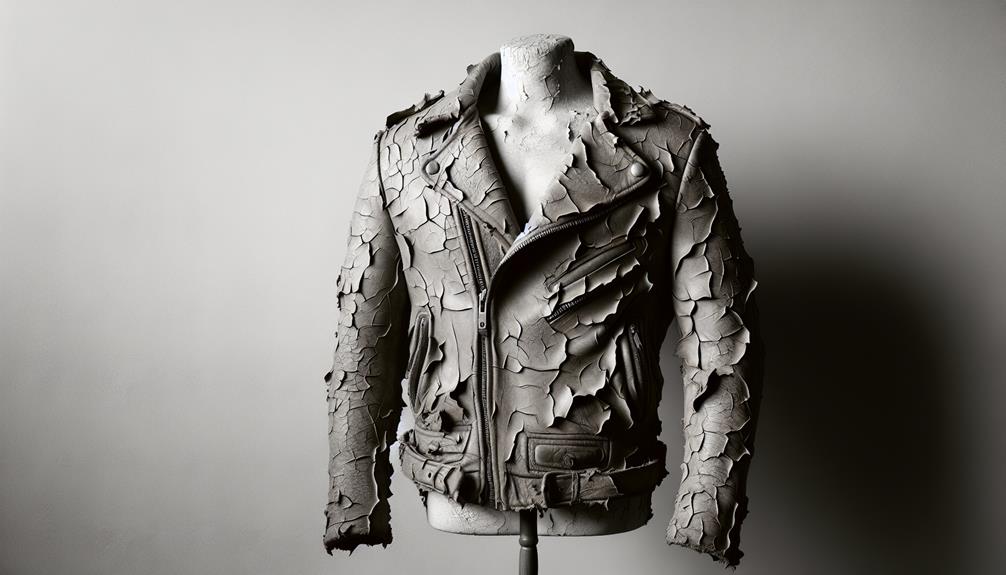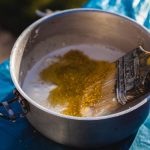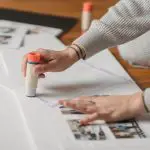The lowest quality leather you'll probably come across is bonded leather. It's made mostly from synthetic materials with a little bit of actual leather mixed in. They basically grind up scraps and glue them together. It feels more like plastic than real leather, and it's not very durable, either. It tends to peel and look shabby really quickly. If you're wanting something that feels and acts like real leather, bonded leather won't cut it. There's quite a bit more to this story about why bonded leather doesn't hold up, and you might be surprised by some of the details.
Table of Contents
Key Takeaways
- Bonded leather is the lowest quality due to its minimal real leather content.
- It often peels and deteriorates quickly compared to higher-quality leathers.
- Bonded leather is made from leather scraps and synthetic materials.
- This type of leather lacks the durability and feel of genuine leather.
- It is commonly used in cheaper products and has a short lifespan.
Understanding Genuine Leather
Why settle for genuine leather when you know it's the lowest quality you can get? Let's dive into what makes genuine leather a less desirable option.
First off, genuine leather is the lowest quality grade of leather. This isn't just a label; it reflects the material's properties and how it's made.
Genuine leather is crafted from leftover scraps. These aren't the prime cuts of the hide, but what remains after the better grades, like full grain or top grain, are taken. These scraps are then heavily processed to create a uniform look. However, this process makes the leather lose its natural strength and beauty.
Because it's made from these scraps, genuine leather often has a less appealing look. It doesn't have that rich, inviting texture that higher quality leathers boast. It's flatter, more artificial. And it doesn't just look worse; it performs worse too. Genuine leather has a shorter lifespan. It wears out faster, meaning whatever I buy won't last as long.
Sure, it's budget-friendly, but the trade-off is clear. If you're after durability and style, genuine leather mightn't be the way to go. It's worth knowing exactly what you're getting into with this grade.
The Truth About Bonded Leather
After exploring genuine leather, let's now look at bonded leather, which also falls short in quality and durability. So, what's bonded leather? It's kind of like the fast food of leathers. It's made from a mishmash of PVC, fiber content, and maybe a bit of real leather—sometimes as little as 20%.
You'll often find bonded leather in places where makers want to cut costs. Think cheaply made office chairs, some flimsy bags, or those books that start to peel after a bit. Because it's so cheap, it's a cost-effective alternative for folks who don't want to spend a lot on leather goods.
Now, the feel and smell? Not so great. Bonded leather lacks breathability and feels more like plastic than plush leather. It even smells kinda artificial. And durability? Nope, not its strong suit. Bonded leather is prone to de-lamination, where it can start peeling off like a bad sunburn.
In short, while it might look okay at first glance, bonded leather doesn't hold up well over time. It's definitely something to think twice about if you're after something that'll last.
Comparing Leather Durability
When comparing leather types, bonded leather often falls short in durability. It's known as the lowest quality leather, mainly because it's made from scraps and synthetic materials. This mix just doesn't hold up well over time.
You might see bonded leather in cheap products like some furniture or budget bags. It's tempting, right? The price looks good, but there's a catch. This type of leather can start peeling pretty fast. Imagine getting a new sofa, and within months, it starts to look worn and tattered. That's not just disappointing; it's a waste of money.
The big issue here is durability. Other leathers can last decades, getting even better with age. Bonded leather? Not so much. Its poor performance is a big letdown. It's not just about it looking bad, it feels different too—more like plastic, less like real leather.
Leather Processing Methods
Let's dive into how leather is processed, which varies widely based on the quality and intended use of the final product. At the bottom of the quality spectrum, we've got bonded leather. It's really the lowest quality you can find. Here's why: this type involves taking leftover scraps of leather and sticking them together with adhesives. They even throw in some synthetic materials to fill it out.
Now, you might wonder, why all the fuss with scraps and glue? It's all about cutting costs. Bonded leather is way cheaper to make, which means it ends up in a lot of inexpensive products. Think about stuff like cheap sofas, budget bags, or those office supplies you don't want to spend a ton on.
Here's a quick breakdown in a table to make it even clearer:
| Aspect | Description |
|---|---|
| Composition | Leather scraps, adhesives, synthetic materials |
| Common Uses | Inexpensive furniture, bags, office supplies |
| Longevity Concerns | Prone to peeling, feels plasticky, quicker deterioration |
Identifying Low-Quality Leather
To spot low-quality leather like bonded leather, check for a plastic-like texture and uneven surface. This type of leather, often dubbed the lowest quality, is a mishmash of leftover scraps and synthetic materials. It's cheaply made, and you can really tell when you touch it.
Here's a quick checklist to keep in mind:
- Feel and Texture: Genuine leather has a warm, inviting feel, unlike bonded leather which often feels cold and overly smooth, almost like plastic.
- Look for Peeling: With some use, bonded leather might start peeling or showing signs of de-lamination. That's a big red flag!
- Smell Test: Bonded leather often lacks that rich, leathery scent. It might smell more chemical-like due to the synthetic materials used.
The Impact of Leather Grades
Understanding the impact of leather grades is key, especially when we compare the longevity and quality of products. Bonded leather, often seen as the lowest quality, really doesn't hold up in the long run. It's made from scraps and synthetic materials, so it lacks the toughness and natural characteristics of better leathers.
Here's a quick table comparing some aspects:
| Feature | Bonded Leather |
|---|---|
| Durability | Low |
| Natural Feel | Lacks |
| Risk of De-lamination | High |
| Lifespan | Short |
Bonded leather's big issue is its durability. Since it's not solid leather, it can't stand up to much wear and tear. It feels more plasticky and is prone to cracking and peeling, which is what we call de-lamination. Basically, it starts falling apart because it can't handle stress well.
This shorter lifespan means it might not be the best bang for your buck. You're likely going to replace bonded leather items way more often than those made from higher quality leather. So, while it might look good and come cheap, it's not gonna last long, making it a less wise choice in the long run.
Maintenance of Different Leathers
Maintaining different types of leather ensures they last longer and stay beautiful. Whether you're splurging on full grain leather or opting for bonded leather, proper care is key. Here's a simple rundown to keep your leather goods in top shape:
- Full Grain Leather
Full grain leather is quite durable. I usually just wipe it with a damp cloth and use a leather conditioner to keep it supple. It's straightforward and keeps the leather looking its best.
- Top Grain Leather
For top grain leather, I follow a similar routine but add a leather protector. This helps prevent stains and damage from moisture, which is especially important because top grain leather isn't as resilient as full grain.
- Split Grain and Bonded Leather
Split grain leather, like suede, needs a bit more TLC. I regularly brush it with a suede brush to maintain its texture. Bonded leather, on the other hand, is more about avoiding heat and sunlight to prevent peeling and cracks.
Cost Vs. Quality in Leather Products
When it comes to leather, you really get what you pay for. Cheap leather might save you some cash, but it won't last long and often ends up peeling or cracking.
On the other hand, spending more upfront for higher quality leather means better durability and overall performance.
Price Impact on Quality
I've noticed that you really get what you pay for with leather products, as lower prices often mean poorer quality. Especially when it comes to bonded leather, which is the lowest quality you can find. Here's why:
- Composition: Bonded leather is made from leather scraps and synthetic materials. This blend impacts the overall quality.
- Appearance vs. Reality: It might look decent initially, but it lacks the depth and feel of real leather.
- Short Lifespan: Due to its construction, bonded leather can't match the longevity and durability of genuine leather.
Durability of Cheap Leather
Cheap leather like bonded leather doesn't last long because it's made from scraps and synthetic materials. It's the lowest quality you can get. If you're going for something budget-friendly, sure, it might look good at first.
But here's the deal: it just doesn't hold up. You'll see it start peeling and looking shabby way quicker than you'd hope. This stuff is notorious for lacking durability. It's not just about it being cheap; it's about what you're getting for that price.
Over time, bonded leather tends to deteriorate pretty fast. It's a bummer, but that's what happens when you mix leather scraps with synthetic materials. You're just not gonna get that long-lasting wear.
High Costs, Better Performance
Investing more in high-quality leather pays off with better durability and performance. When you choose top-tier options like full-grain or top-grain leather, you're getting the real deal in terms of both looks and lifespan. Here's why splurging a bit more upfront can be worth it:
- Resilience: Full-grain leather ages beautifully, gaining character rather than wearing out.
- Feel: Top-grain leather retains a smooth, quality texture that synthetic or lower grades like bonded leather can't match.
- Value: Although pricier, quality leather goods offer longer usability, which means less frequent replacements.
Frequently Asked Questions
What Is the Cheapest Type of Leather?
The cheapest type of leather is bonded leather. It's made from scraps and synthetic materials, so it's less durable and feels less natural than other types, like full grain leather.
What Is Poor Quality Leather?
I'd say poor quality leather includes genuine and bonded leather. They're made from lower hide layers or scraps, heavily processed, and lack the durability and natural feel of higher quality leathers.
What Is the Weakest Leather?
The weakest leather is bonded leather. It's made from scraps and synthetic materials, making it less durable and prone to issues like peeling. I'd avoid it if you're looking for quality and longevity.
What Are the 5 Grades of Leather?
I'm learning about leather grades. There are five: Full Grain, Top Grain, Genuine, Split Grain, and Bonded. Each varies in quality, durability, and appearance, crucial for making informed choices in leather products.
- What Is Polycotton? The Ultimate Guide to This Versatile Fabric Blend - June 23, 2025
- Your Top 10 Questions About Cotton Polyester Fabric, Answered - June 23, 2025
- The Future of Blended Fabrics: Innovations in Poly-Cotton - June 23, 2025





